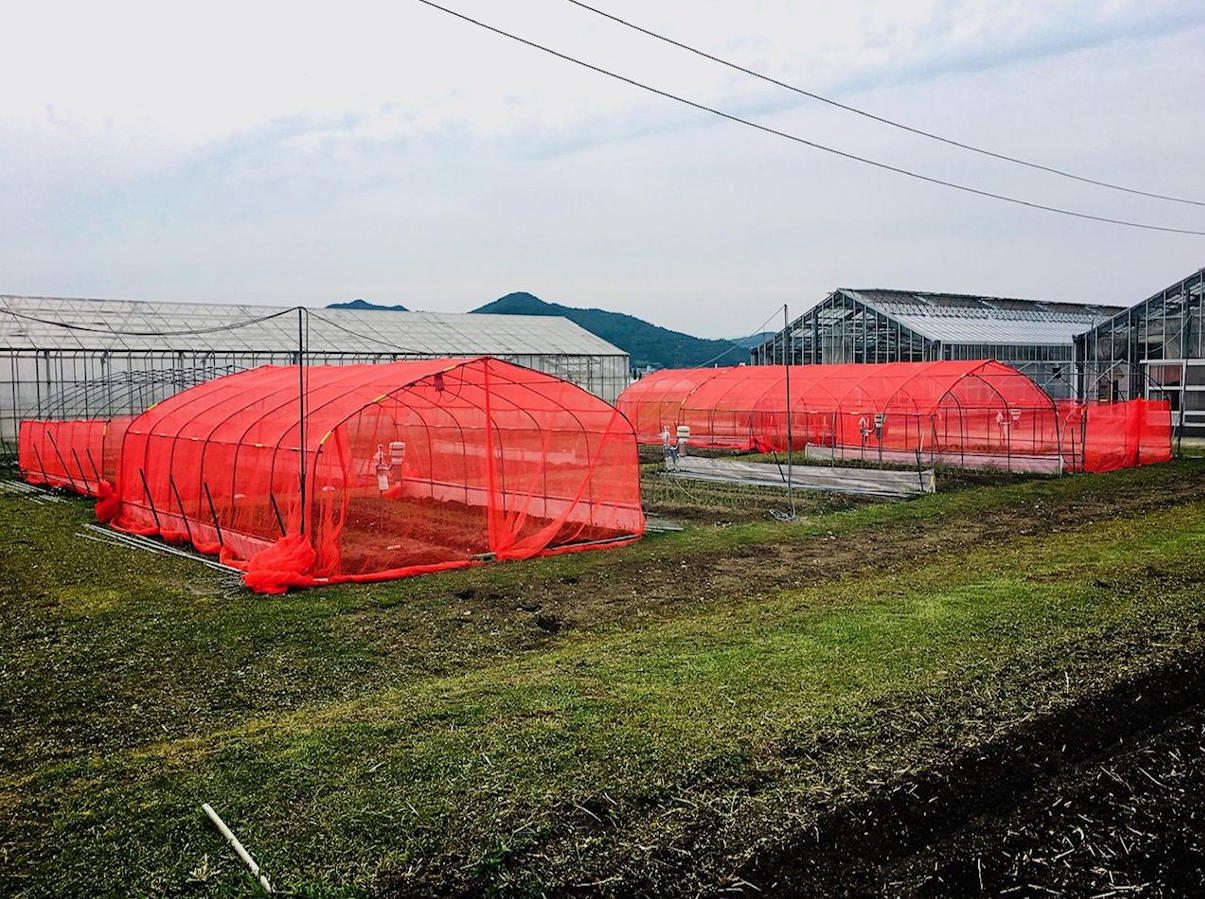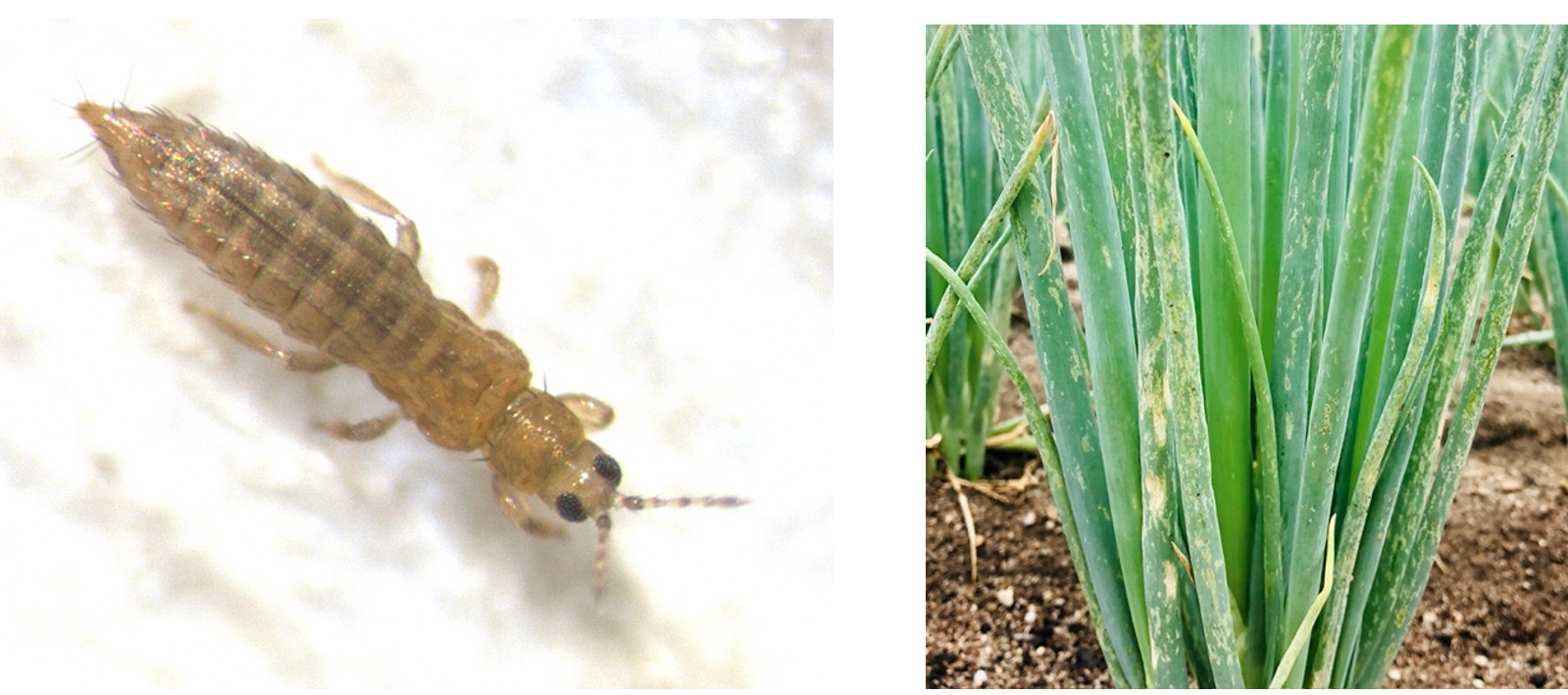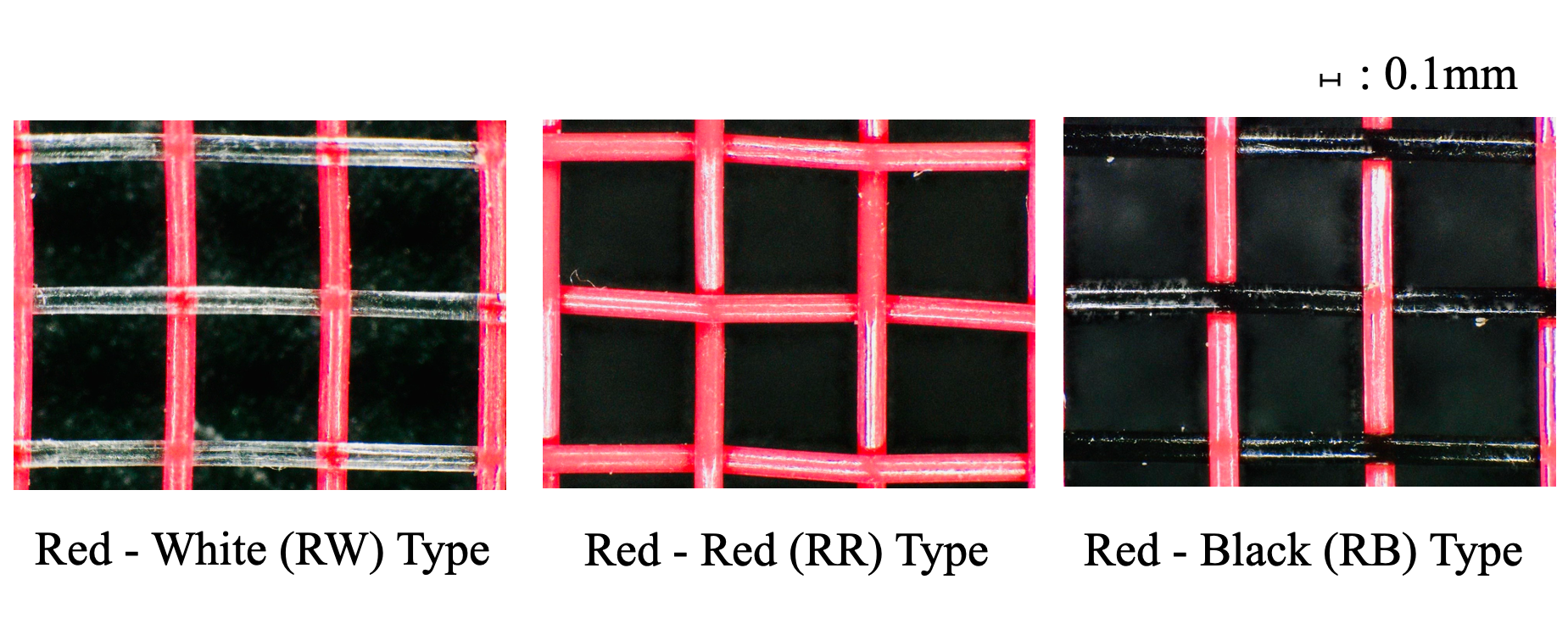
Field test in Kyoto, Japan. The type of Welsh onions used in the experiment were a variety called Kujo leek, or Kujo negi in Japanese. These onions are a traditional vegetable of the Kyoto region and a staple part of local cooking. © 2024 Tokumaru et al./Scientific Reports
Red nets are better at keeping away a common agricultural insect pest than typical black or white nets, according to a new study. Researchers experimented with the effect of red, white, black and combination-colored nets on deterring onion thrips from eating Kujo leeks, also called Welsh onions. In both lab and field tests, red nets were significantly better at deterring the insect than other colors. Also, in field tests, onion crops which were either partially or fully covered by red netting required 25-50% less insecticide than was needed for a totally uncovered field. Changing agricultural nets from black or white to red could help reduce pesticide use and the related negative impact it can have on the environment, while supporting more sustainable and effective agricultural practices.
Insect pests can be a nightmare for any gardener. No sooner do fresh buds appear then they are covered in aphids, beetles and other bugs looking for a tasty snack. While synthetic insecticides are widely used to control pests in gardens and on agricultural crops, many are known to cause damage to the natural environment by leaching into the soil and water supplies, and poisoning plants, wildlife and harmless insects. Some pests are also becoming resistant to the chemicals, so farmers are running out of options for what to use and needing to apply more often.
Agricultural nets are another way to protect crops and reduce insecticide use. You may see the typically white-, black- or blue-netted greenhouses when you pass by an orchard or vegetable field. Like a mosquito net over a bed, they physically prevent insects from getting to crops. It makes sense to think that the most important feature of these nets would be the size of the holes in the mesh. The smaller the hole, the smaller the insect has to be to enter. However, a research team from the Kyoto Prefectural Agriculture, Forestry and Fisheries Center and the University of Tokyo have found that the net’s color may act as an even more important deterrent.

Thrips tabaci, the onion thrips, and its damaging effect on Welsh onions. The onion thrips devastates a wide variety of important crops (including Welsh onions, cabbages, potatoes, melons, pumpkins, strawberries, cotton and more) by damaging their leaves and spreading disease. © 2024 Tokumaru et al./Scientific Reports
“We tested red nets which had a mesh size that was larger than the insect body, but still more effective than other conventional black or white nets with a smaller mesh size. This ‘optical pest control’ relies on the nature of insect color vision to keep pests away,” explained Professor Masami Shimoda from the Graduate School of Agricultural and Life Sciences at the University of Tokyo. “Most insects don’t have red photoreceptors in their eyes and it is difficult for them to see the color red, so we found it curious that an invisible color can be used to control them.”
The team focused on one pest, the onion thrips (Thrips tabaci). This insect is highly resistant to insecticides and causes extensive damage to a range of important crops worldwide, by eating them and by spreading harmful viruses. The researchers tested three color combinations of red nets (red-white, red-black and red-red) at three mesh sizes (2 millimeters, 1 mm and 0.8 mm). They also tested typical black, white and black-white combination nets of the same sizes, in the lab and in the field.
Overall, all nets which included red fibers performed significantly better at keeping out onion thrips than black or white nets. In the second outdoor trial, the researchers tested the effectiveness of red-red netting at different levels of cover: no cover, full cover, top only and side only. Due to an outbreak of onion thrips in the area, insecticide was used. The fully covered plot required the least amount of insecticide and produced onions of high commercial value. The plots which were only ceiling or side covered required one additional application of insecticide, compared to the fully covered plot. Compared to the completely uncovered plot, the red-netted plots overall reduced the number of insecticide applications needed by 25-50%.
“These new red nets are more expensive than pesticides, but they are economical because they can be used for years. They are also very effective in controlling pests without all the work involved in spraying pesticides,” said Shimoda. “My dream is that in future we can make red nets that don’t look red — at least not to the human eye, but they would have the same effect on pests. Hopefully, this would reduce manufacturing costs, and we can find ways to increase durability.”

Three types of red nets. The researchers tested the spectral reflectance, the wavelengths of light reflected, off the different nets. At wavelengths longer than 600 nanometers (billionths of a meter), we see the colors orange to red. As spectral reflectance was higher from the red nets, the team contemplated whether the deterring effect on onion thrips might be due to these longer wavelengths stimulating certain receptors in the insects’ eyes. © 2024 Tokumaru et al./Scientific Reports
As well as reducing infestation by onion thrips, another advantage of red nets is that because they rely on color and not mesh size, they can have larger holes. This improves breathability, reduces the chance of fungal infections and improves access to sunlight. Also, due to better airflow, temperatures don’t become as high within the greenhouse, making it easier for farmers working inside.
“If consumers are interested in this type of sustainable agriculture and using less chemical pesticide, I have no doubt that this simple yet effective solution will spread widely,” said Shimoda. “My family have been full-time farmers since the Edo period (17th century), and I myself enjoy growing vegetables and fruits on a small scale, although pests can make it challenging. Growing your own fruits and vegetables and eating them fresh is exceptionally worthwhile.”








